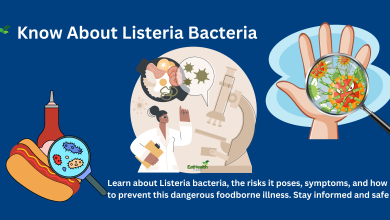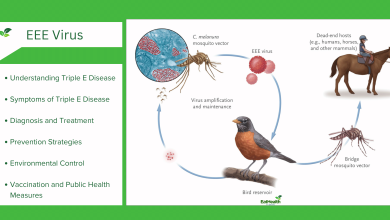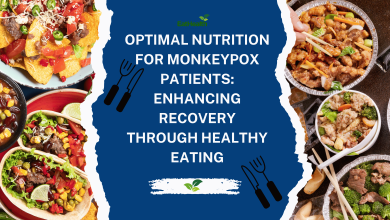Understanding Long COVID: Symptoms and Recovery
Navigating Long COVID: Understanding Symptoms and Recovery Strategies

Understanding Long COVID: Symptoms and Recovery
Long COVID has emerged as a significant concern following the COVID-19 pandemic, affecting individuals of all ages and health backgrounds. This article aims to provide a comprehensive understanding of Long COVID, its symptoms, recovery process, and the ongoing challenges it presents to both patients and healthcare providers.
Long COVID Basics
Long COVID refers to a condition where individuals continue to experience symptoms for weeks, months, or even longer after the acute phase of a COVID-19 infection has resolved. These symptoms can fluctuate in severity and may affect multiple organ systems, requiring comprehensive and often specialized care. While initially recognized predominantly in adults, Long COVID can also impact children who have had SARS-CoV-2 infections.
Key Points
- Long COVID is a serious illness that can result in chronic conditions requiring comprehensive care.
- Symptoms and conditions associated with Long COVID can persist, worsen, or improve over time.
- Vaccination against COVID-19 is the best preventive measure against Long COVID.
- Living with Long COVID can be challenging due to the variability of symptoms and the lack of immediate solutions.
About Long COVID
Long COVID is defined as a persistent condition that develops following SARS-CoV-2 infection and lasts for at least three months. It encompasses a broad spectrum of symptoms and conditions that can include respiratory, neurological, cardiovascular, and psychological manifestations. The onset of Long COVID can occur shortly after the initial COVID-19 infection or may develop in individuals who did not recognize or experience acute COVID-19 symptoms.
Signs and Symptoms of Long COVID
COVID-19 affects individuals differently, and similarly, Long COVID presents with a wide range of symptoms that vary in duration and intensity. Commonly reported symptoms include:
- Fatigue: Persistent and debilitating exhaustion that may not improve with rest.
- Brain Fog: Difficulty concentrating, memory problems, and cognitive impairment.
- Post-Exertional Malaise (PEM): Worsening of symptoms after physical or mental exertion.
- Respiratory Issues: Shortness of breath, chest pain, and ongoing cough.
- Cardiovascular Symptoms: Heart palpitations, chest discomfort, and irregular heart rhythms.
- Neurological Symptoms: Headaches, dizziness, neuropathic pain, and sensory disturbances.
- Psychological Impact: Anxiety, depression, mood swings, and emotional instability.
- Gastrointestinal Issues: Nausea, diarrhea, and abdominal pain.
Symptoms that are Hard to Explain and Manage
A significant challenge in diagnosing and managing Long COVID is the presence of symptoms that are not easily explained by conventional medical tests. There is no specific laboratory test for Long COVID, and symptoms may overlap with other chronic conditions, complicating diagnosis and treatment.
Complications of Long COVID
Individuals who experienced severe COVID-19 infections are at higher risk of developing multi-organ complications associated with Long COVID. These complications can affect various body systems, including:
- Cardiac: Heart inflammation (myocarditis), arrhythmias, and cardiomyopathy.
- Pulmonary: Lung damage, pulmonary fibrosis, and chronic respiratory insufficiency.
- Neurological: Stroke, seizures, Guillain-Barré syndrome, and cognitive impairments.
- Endocrine: Diabetes mellitus, adrenal insufficiency, and thyroid disorders.
- Renal: Acute kidney injury and chronic kidney disease.
- Psychiatric: Anxiety disorders, depression, and post-traumatic stress disorder (PTSD).
Who is at Risk for Long COVID?
While anyone can develop Long COVID, certain factors increase the likelihood of its occurrence:
- Severe COVID-19 Illness: Individuals who required hospitalization or intensive care are at higher risk.
- Age: Adults over 65 and children may be more susceptible.
- Gender: Women are reported to be more likely to experience Long COVID.
- Underlying Health Conditions: Individuals with pre-existing medical conditions such as obesity, diabetes, cardiovascular disease, and respiratory disorders are at increased risk.
- Vaccination Status: Unvaccinated individuals are more vulnerable to severe COVID-19 illness and subsequent Long COVID.
Health Inequities and Long COVID
Health disparities based on socioeconomic status, race, ethnicity, and geographical location contribute to inequities in Long COVID outcomes. Marginalized populations often face barriers to accessing healthcare services, which can exacerbate the impact of Long COVID symptoms and delay treatment.
Prevention of Long COVID
Importance of COVID-19 Vaccination
Vaccination remains the most effective strategy for preventing severe COVID-19 illness and subsequent Long COVID. Vaccines significantly reduce the risk of infection, transmission, and the development of severe symptoms that can lead to Long COVID. Public health agencies recommend COVID-19 vaccination for everyone eligible, including children and adolescents.
Other Preventive Measures
In addition to vaccination, practicing good hygiene, maintaining adequate ventilation indoors, and seeking prompt medical evaluation for COVID-19 symptoms can help reduce the risk of infection and Long COVID complications. Just as we know Vaccination Benefits: Protecting Your Health
Testing and Diagnosis of Long COVID
Diagnosing Long COVID relies on a thorough assessment of symptoms, medical history, and exclusion of other potential causes. Healthcare providers may perform clinical evaluations, routine blood tests, imaging studies, and cardiac evaluations to understand the extent of multi-system involvement. Despite comprehensive testing, many individuals with Long COVID experience delays in diagnosis and treatment due to the complexity and variability of symptoms.
Similar Conditions and Differential Diagnosis
Some symptoms of Long COVID overlap with those of other chronic conditions, such as myalgic encephalomyelitis/chronic fatigue syndrome (ME/CFS) and autoimmune disorders triggered by viral infections. Differential diagnosis is essential to distinguish Long COVID from these conditions and provide appropriate management strategies.
Living with Long COVID
Management and Treatment
Currently, there is no cure for Long COVID, and treatment focuses on symptom management, improving quality of life, and minimizing disability. Multidisciplinary approaches involving healthcare providers, rehabilitation specialists, mental health professionals, and social support networks are essential for comprehensive care.
Psychological and Social Impact
Living with Long COVID can be emotionally challenging, as individuals may experience frustration, isolation, and uncertainty about their future health. Access to mental health services, peer support groups, and community resources can provide invaluable support for coping with the psychological impact of Long COVID.
Conclusion
Long COVID represents a complex and evolving medical challenge, affecting millions of individuals worldwide. Understanding its diverse symptoms, risk factors, and long-term implications is crucial for healthcare providers, policymakers, and affected individuals. By prioritizing vaccination, promoting equitable access to healthcare, and supporting ongoing research, we can mitigate the impact of Long COVID and improve outcomes for those affected.
Call to Action
If you or someone you know is experiencing persistent symptoms after COVID-19 infection, seek medical advice promptly. Stay informed about Long COVID developments, advocate for supportive healthcare policies, and prioritize vaccination to protect yourself and your community against this debilitating condition. Together, we can navigate the challenges of Long COVID and work towards better health outcomes for all.




